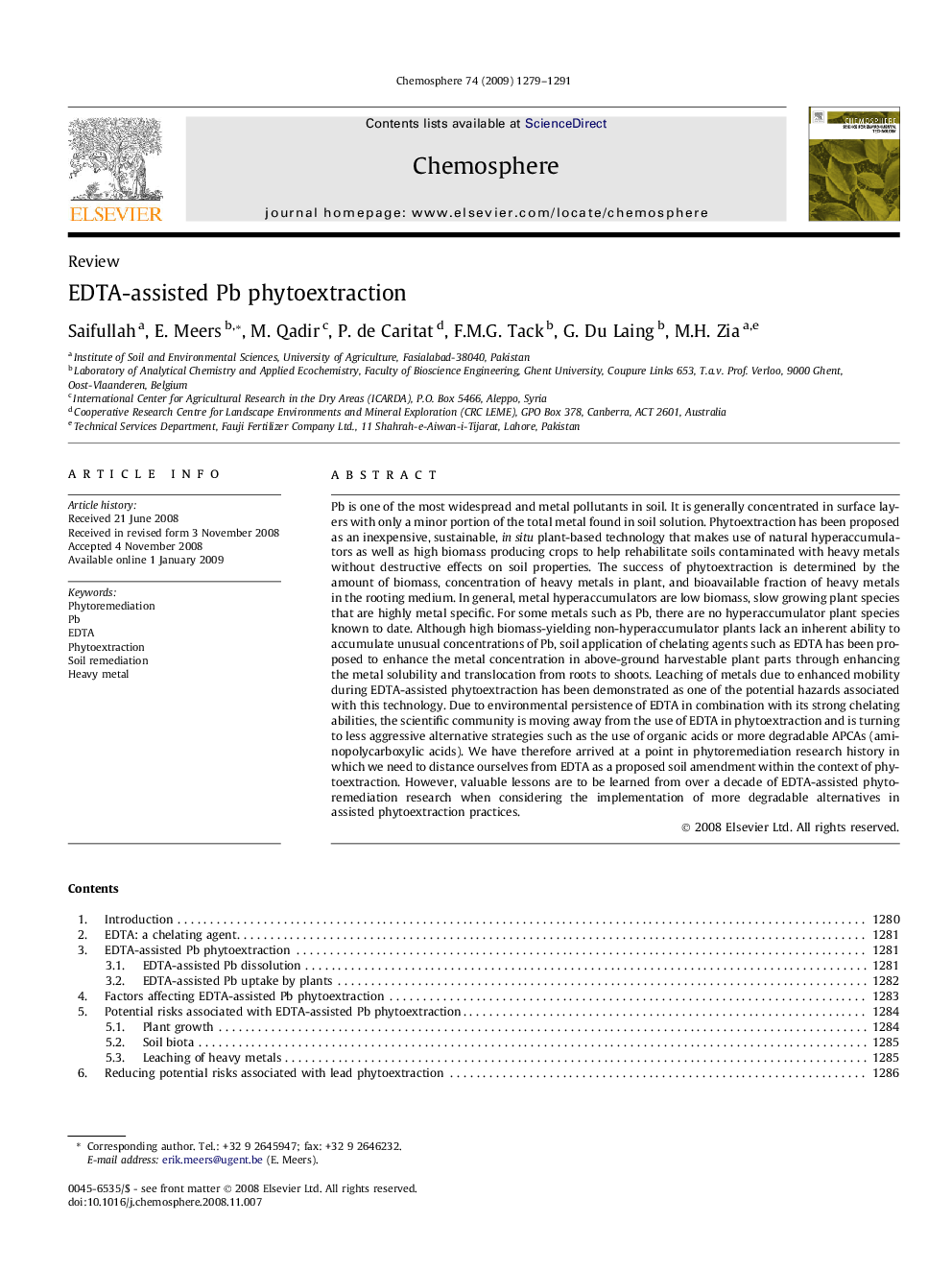| کد مقاله | کد نشریه | سال انتشار | مقاله انگلیسی | نسخه تمام متن |
|---|---|---|---|---|
| 4413183 | 1307668 | 2009 | 13 صفحه PDF | دانلود رایگان |

Pb is one of the most widespread and metal pollutants in soil. It is generally concentrated in surface layers with only a minor portion of the total metal found in soil solution. Phytoextraction has been proposed as an inexpensive, sustainable, in situ plant-based technology that makes use of natural hyperaccumulators as well as high biomass producing crops to help rehabilitate soils contaminated with heavy metals without destructive effects on soil properties. The success of phytoextraction is determined by the amount of biomass, concentration of heavy metals in plant, and bioavailable fraction of heavy metals in the rooting medium. In general, metal hyperaccumulators are low biomass, slow growing plant species that are highly metal specific. For some metals such as Pb, there are no hyperaccumulator plant species known to date. Although high biomass-yielding non-hyperaccumulator plants lack an inherent ability to accumulate unusual concentrations of Pb, soil application of chelating agents such as EDTA has been proposed to enhance the metal concentration in above-ground harvestable plant parts through enhancing the metal solubility and translocation from roots to shoots. Leaching of metals due to enhanced mobility during EDTA-assisted phytoextraction has been demonstrated as one of the potential hazards associated with this technology. Due to environmental persistence of EDTA in combination with its strong chelating abilities, the scientific community is moving away from the use of EDTA in phytoextraction and is turning to less aggressive alternative strategies such as the use of organic acids or more degradable APCAs (aminopolycarboxylic acids). We have therefore arrived at a point in phytoremediation research history in which we need to distance ourselves from EDTA as a proposed soil amendment within the context of phytoextraction. However, valuable lessons are to be learned from over a decade of EDTA-assisted phytoremediation research when considering the implementation of more degradable alternatives in assisted phytoextraction practices.
Journal: Chemosphere - Volume 74, Issue 10, March 2009, Pages 1279–1291